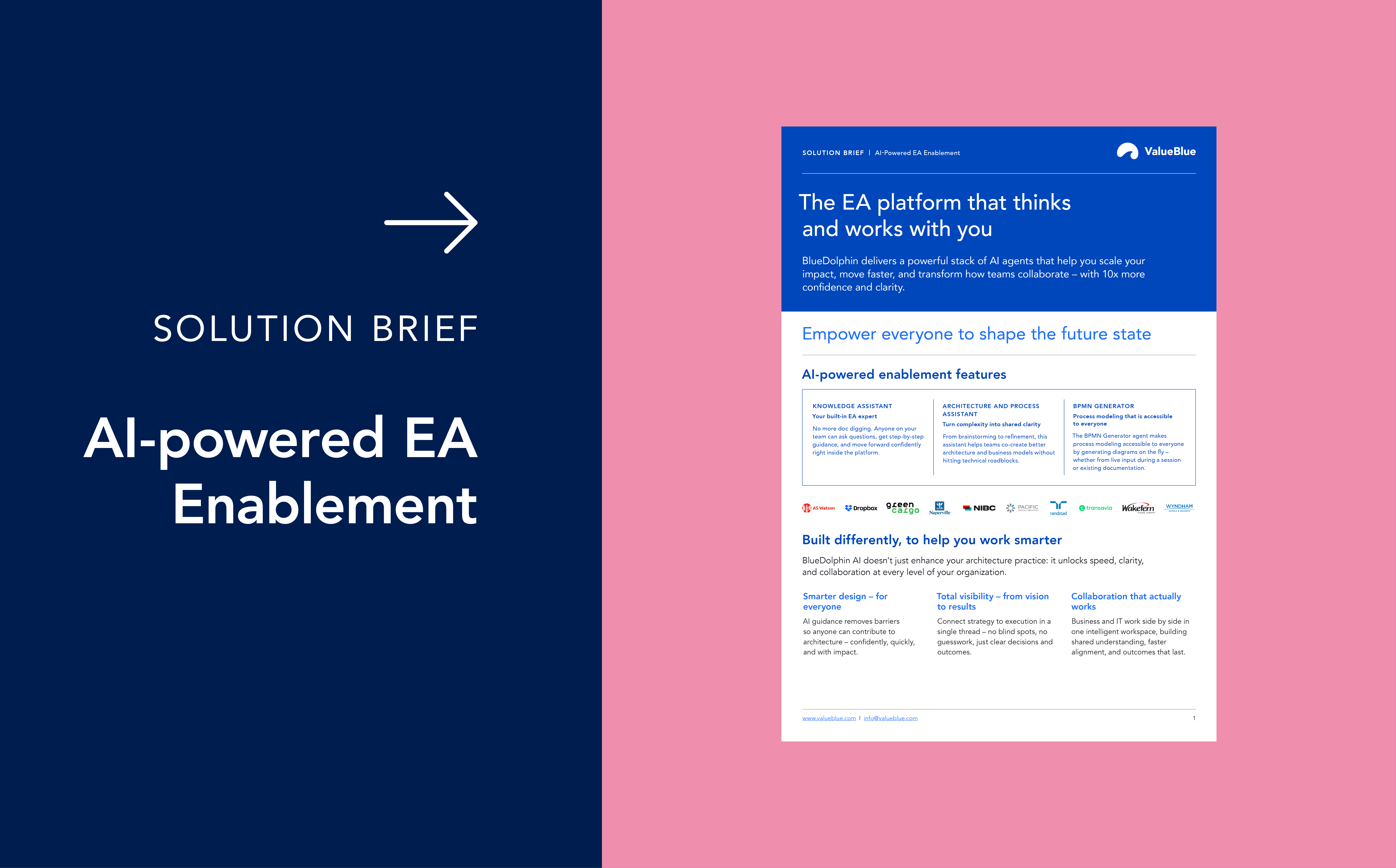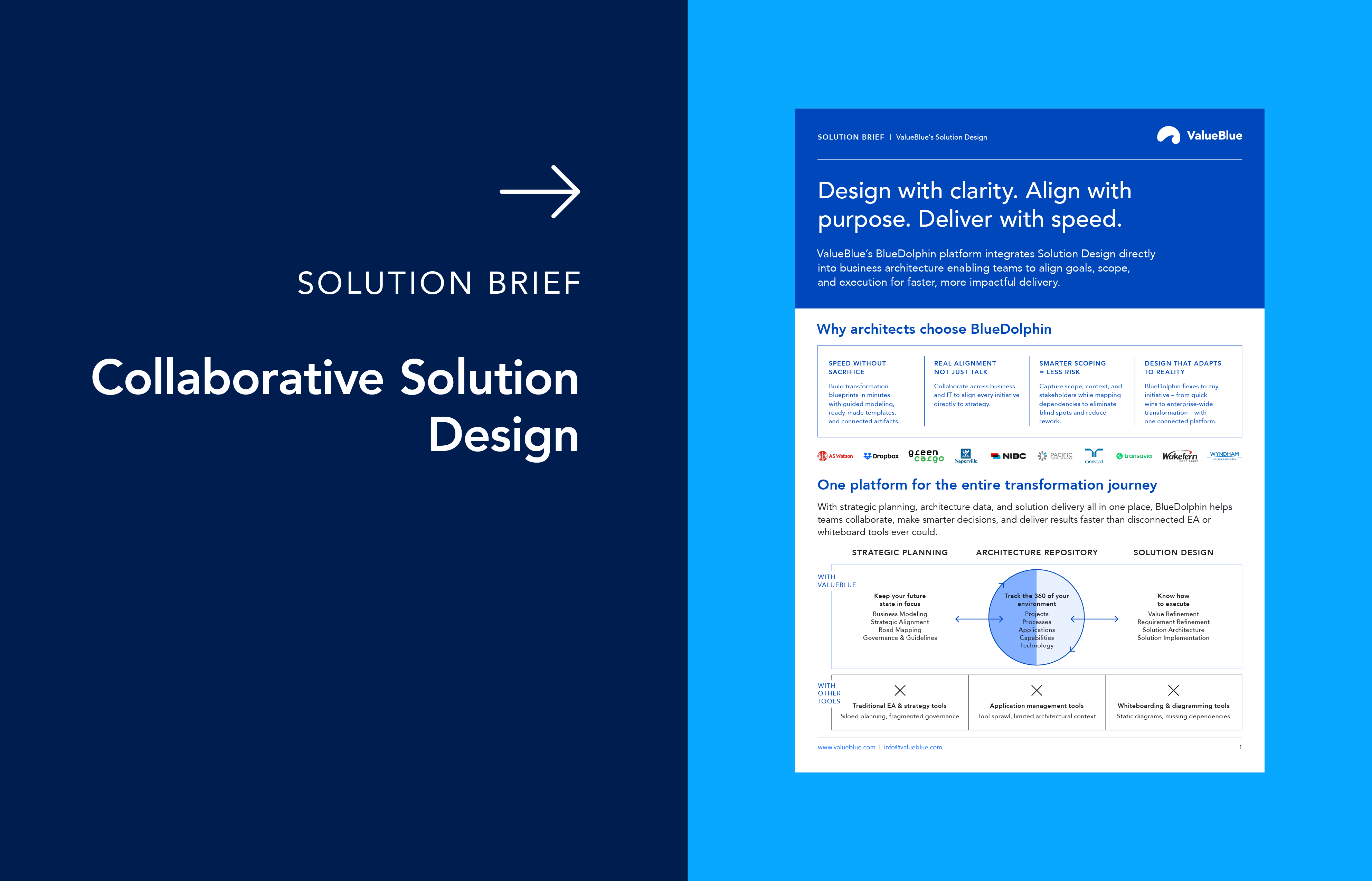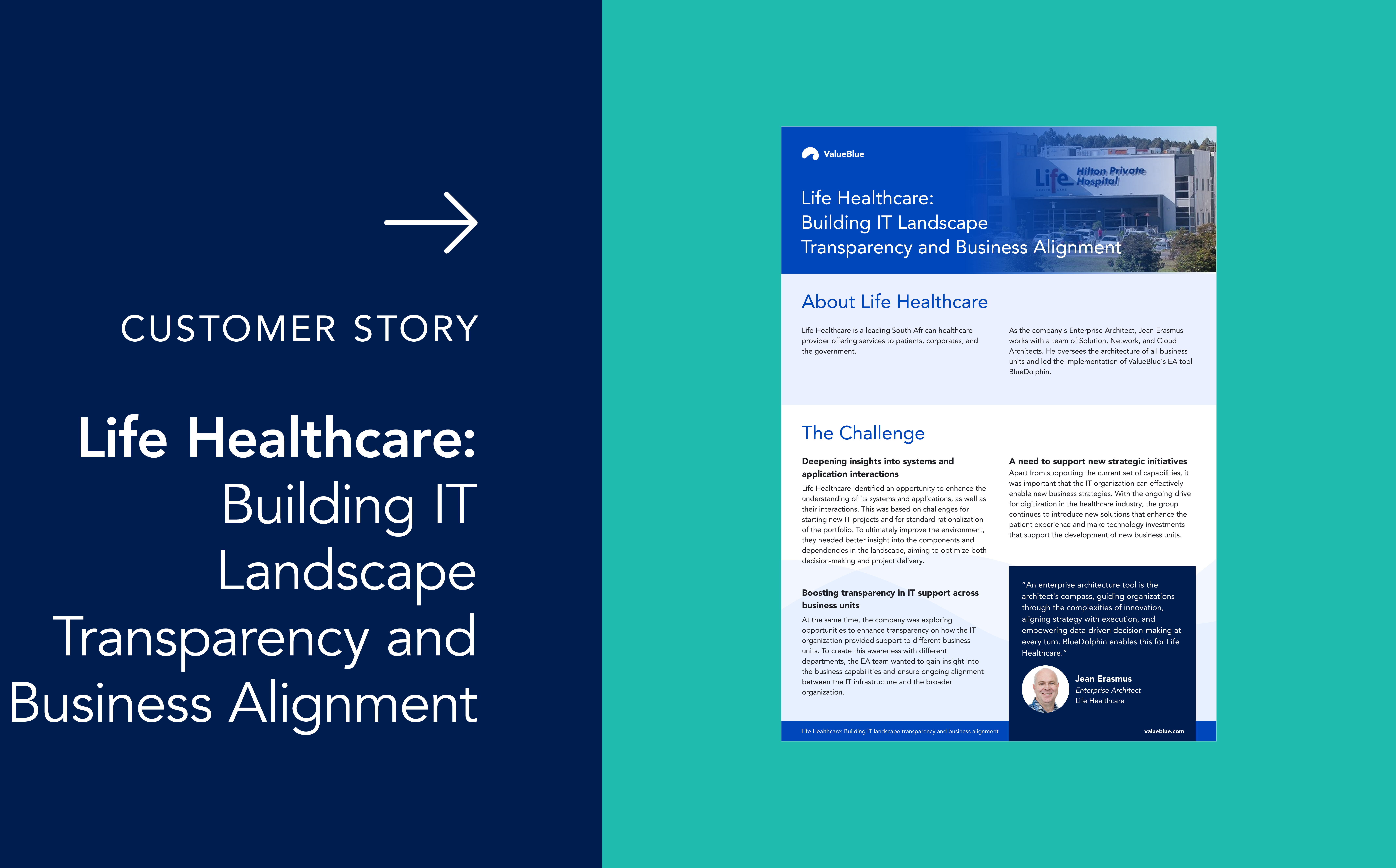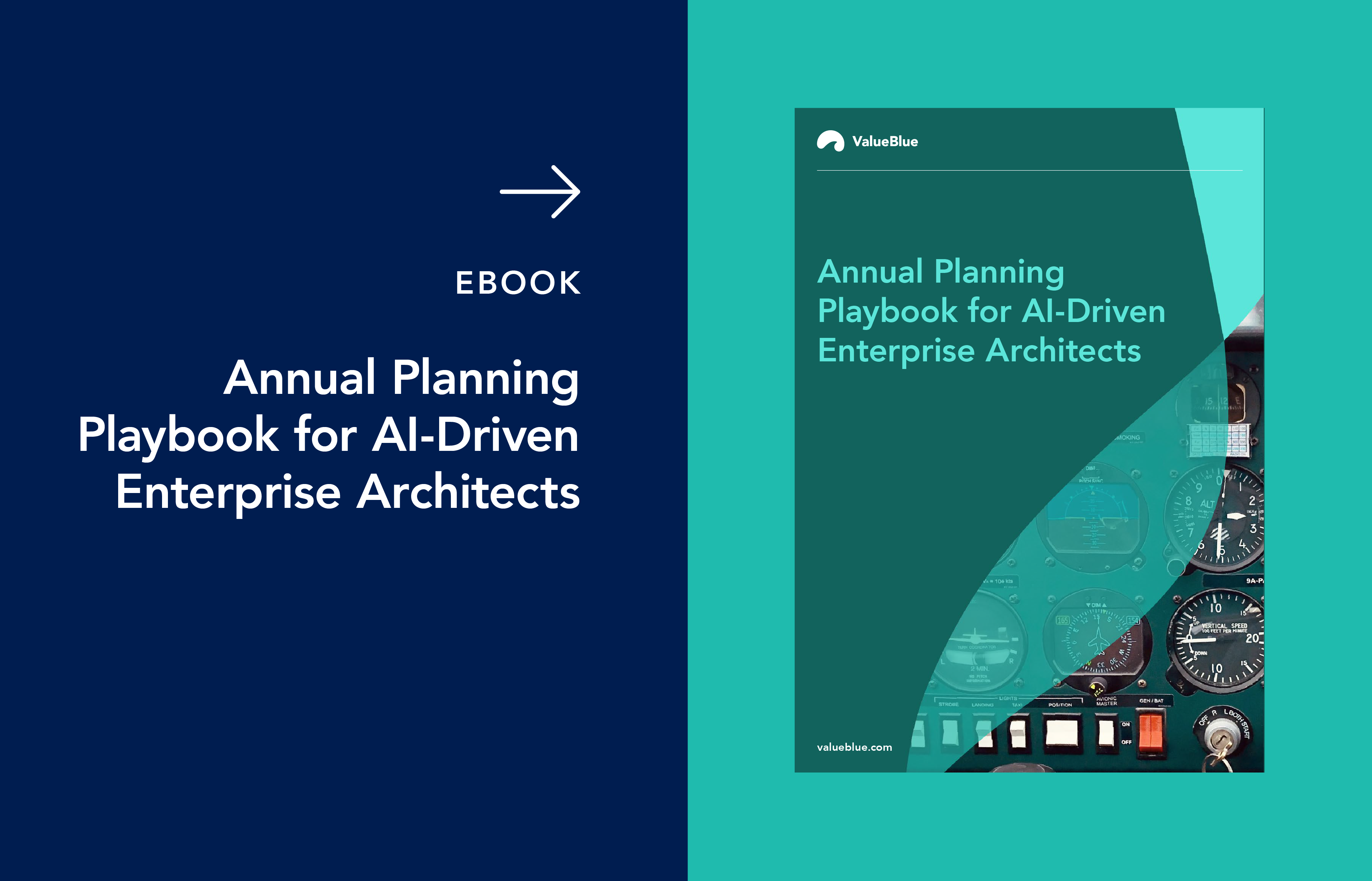Use Enterprise Architecture Tools to Connect PowerPoint, Visio, and Excel
Enterprise Architecture (EA) is a critical component of any organization's success, as it helps to align strategy, processes, and technology to achieve business goals. Implementing EA practices within an organization can be done in different ways through different Enterprise Architecture tools, which are specially designed to offer certain functionalities and visibility which set the foundation for EA success. Yet, many organizations rely on tools like PowerPoint, Visio, and Excel to manage their Enterprise Architecture, despite the limitations and challenges these tools pose.
In this blog, we will explore the benefits of using a collaborative Enterprise Architecture tool and why having one central repository tool is so important. Say goodbye to traditional tools like PowerPoint, Visio, and Excel.
Improved Collaboration and Communication
One of the biggest advantages of using a collaborative Enterprise Architecture tool is that it allows for improved collaboration and communication among team members.
Separate departments within organizations typically have their own spreadsheets, PowerPoints, or various other systems in which they store data and information. A main benefit of Enterprise Architecture tools is that it acts as a central repository all team members can easily access to update their data with the latest architecture. This reduces the time and effort required to manage and maintain the repository. All stakeholders can access and contribute to the architecture data in real time, ensuring everyone is on the same page and working towards achieving the business goals.
Demonstrating Value of Enterprise Architecture
For Enterprise Architects, one of the most difficult parts of their job is to demonstrate the value Enterprise Architecture software brings to the rest of the organization and get them on board with EA practices. When free software alternatives such as Excel sheets or Visio plots are passed around and modified, there is no overview of which version is the most up-to-date version. However, with an Enterprise Architecture tool, everyone works in the same location and version. Thus, you're always working with the most current version of your data from the tool, so non-Architects can log in to view accurate information and progress.
Better Visibility and Governance
Another key benefit of using a collaborative Enterprise Architecture tool is that it provides better visibility and governance to the organizational architecture. With a centralized platform, you can easily track changes and updates, ensuring that the architecture remains aligned with business goals and that any issues are quickly identified and addressed. This platform is called a demand central repository (DSR).
Traditional EA assumes a current state that takes you to the desired future state to meet the business goals. Nowadays, more factors affect the IT landscape, which is why it is important to maintain an understanding of an up-to-date current state to adjust when needed. For example, the top line in the image below shows traditional EA practices. You decide where the company wants to be, and you follow your plan to get from A to B. However, in the picture, you can also see that without any adjustments or responses to change, you end up missing the mark.
Now, look at the second line. This line uses agile EA practices to adjust and respond to changes in real-time to hit the desired architecture.

Enterprise Architecture Tools
While there are free tools like PowerPoint, Visio, and Excel that can be used for Enterprise Architecture, they lack the functionality and integration that an Enterprise Architecture tool with a shared repository can provide. With a true Enterprise Architecture tool, your shared central repository allows your current situation to be constantly updated, enabling you to adapt more quickly and achieve your goals.
An Enterprise Architecture tool can offer a range of features specifically designed to support the EA process, such as automated documentation, version control, and impact analysis.
While Enterprise Architecture software comes at a cost, the added value it provides will more than pay for itself in the long run. By streamlining the EA process, promoting collaboration and communication, and ensuring consistency and accuracy, Enterprise Architecture tools with a shared repository help organizations achieve their technology strategy goals more efficiently and effectively.
Conclusion
In conclusion, a collaborative Enterprise Architecture tool is a better solution than traditional tools like PowerPoint, Visio, and Excel. It offers improved collaboration and communication, better visibility and governance, enhanced scalability and flexibility, and increased efficiency and productivity. With the right tool, organizations can better align strategy, processes, and technology to achieve their business goals. It takes an investment to go from free solutions to a collaborative Enterprise Architecture tool, but it also lets you reap more fruitful rewards. In addition, it helps with one of the most important tasks of an Enterprise Architect: showing their value within the organization and getting their stakeholders on board.
Who We Are
ValueBlue is the company behind the collaborative Enterprise Architecture tool BlueDolphin. This digital transformation platform helps CxOs and Architects to plan their transformation, collaborate on execution, and manage the process based on real data insights. With BlueDolphin, the entire business works together to plan its transformation, design the implementation, and manage the process based on up-to-date data insights. Curious about BlueDolphin? Download our brochure for more information.
Download our Brochure
Want to learn more about how the BlueDolphin Platform helps Enterprise Architects and other parts of the business collaborate? Download our brochure to learn more!




